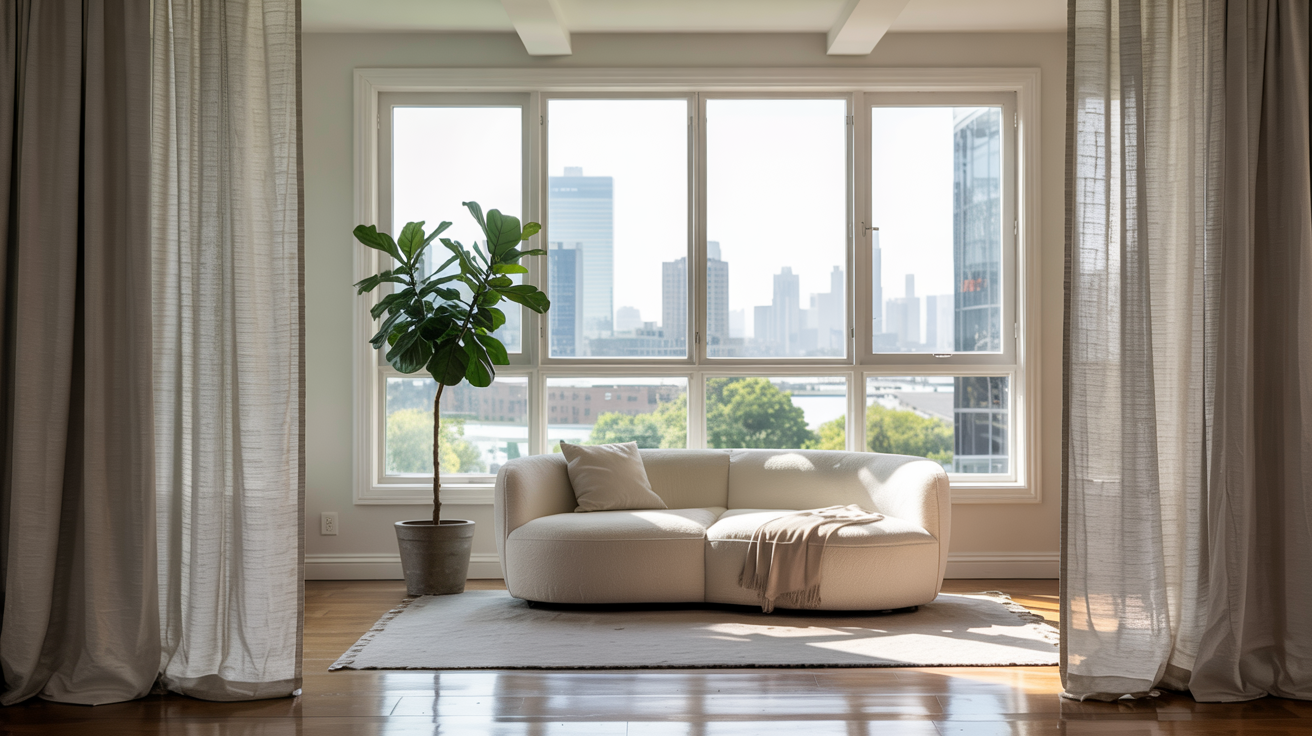Windows are much more than mere openings in walls: they are important elements that considerably affect aesthetics, functionalities, and the overall atmosphere of an interior.
It is not just a matter of allowing a beautiful view of the outdoors, but of affecting, as we have said earlier, natural light and air throughout the course of the day, and even the well-being of the people staying there.
For interior design, attaining and effectively utilizing this window designing input is the beginning stage of designing an integrated and livable environment.
Consider the extent of nature’s lessons through these windows: the magical touches of daylight. Light ebbs and flows in sync with nature like life itself would. Light is an art work in the nature of the colours, the tones, the textures, and the architecture that a designer can only dream of replicating with an artificial light source.
For instance, if a little spun light beams through a clear window, the change in light intensity and direction married with sunlight will render planes of lived space in constant change from a subdued and soft morning glow up to a midday glare clear until evening hues ignite the walls in the scarlet palette associated with the setting sun.
Day or night, shadows beget greater contrasts while light sources morph the colour of a room full of reflections all day. Interior designers may also harness the power of the view when considering placement and size, so that spaces are lit correctly and, therefore, feel more valuable and open.
Windows elongate open areas, thereby almost merging the interior and exterior worlds together, making even cramped spaces feel more spacious and less confined. All allow for new relations between built forms and the landscape.
Windows can single-handedly determine the degree of open and closed areas when deployed in interior spaces, all depending on light penetration through openings. Illuminate a room and perceive it more significant means said occupants will also perceive it more significant.
Nothing wrong with enlarging small rooms into more significant areas; it’s solely what lighting does for spaces portrait-wise.
For a moment, they say that windows in interior design do pay a great lessee on aesthetic issues. Style and structure of the windows, including materials for the frames, colour, and glazing, can greatly determine what the heaven-area should look like.
Modern-day windows with just plain glass can be marvelous when inserted into a contemporary design while an architectural grille inside traditionally wide single pane can be intended for older interiors.
Window treatments, such as curtains and blinds, offer many possibilities for dressing up the interior with materials that can control light and privacy while adding pops of texture, colour, and pattern to enrich room characteristics. Selecting the best window treatments available is important in bringing a certain mood and functionality to a space.
In conclusion, windows exist and are employed to far beyond just being functional openings on the facade of a building.
Looking closely at the interior design of window roles as an associative force in nature, the replacement of “windows” would have to exist because it is such a part of the whole into light, ventilation, view in and out, perception of space and aesthetic delight. Hence, for any interior to look more than merely appealing, window placement, size, type, and treatment-these are disciplines related to content for consideration.
Be it the initiation of a home project, or doing remodeling, a clear understanding of window importance is justified in interior decoration. Professionals in services such as Winnipeg windows & doors, or wherever else in the world, offer this valuable know-how to the client so as to guide him/her into making the major design decision during construction.
From there on out, designing windows within the design theme and specifics of the interiors will foster an experience that caters directly to our homes’ occupants.

